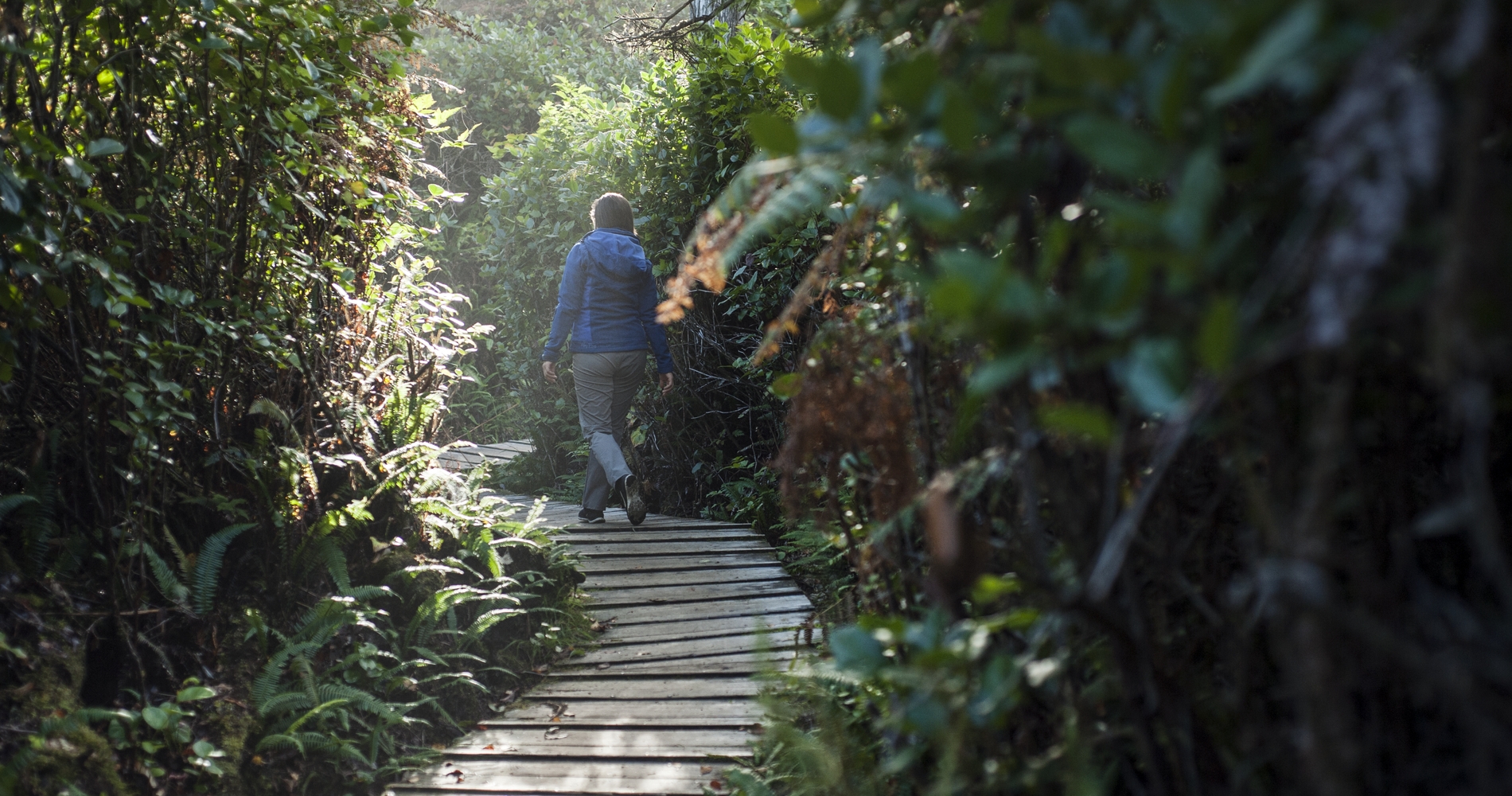Forest Bathing is Not Hiking
While hiking involves moving purposefully across terrain, forest bathing isn’t about following a defined route. Bolton’s forest therapy walks, which last about 2-1/2 hours, may span only about one kilometre. “This experience is much slower,” she says. “The guide will really slow down the participants and get them to interact with the forest with all their senses.” Rather than the destination, the point is to focus on the details of the journey.
But unlike an interpretive nature walk, the guide’s role isn’t to explain the flora and fauna. Rather, the guide facilitates the contemplative experience, offering participants “invitations” to interact with the forest in a meaningful and healing way.
For example, participants will be invited to use their eyes, paying attention to what’s in motion. “Sometimes there are lots of birds flying, and that’s easy to see. Sometimes it’s the wind blowing—the slightest breeze is making one little leaf twirl in circles,” she explains.
Other times participants will focus on sound or touch. “How many of us really slow down and feel the different textures in the forest?” she asks. Even the sense of taste is stimulated. At the end of the session, there’s a tea ceremony that highlights the edible plants of the forest such as lemon balm, licorice root, or a hemlock tree’s citrusy new spring growth.






